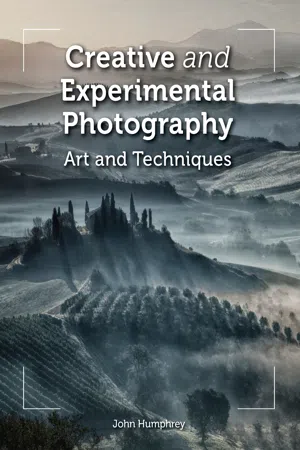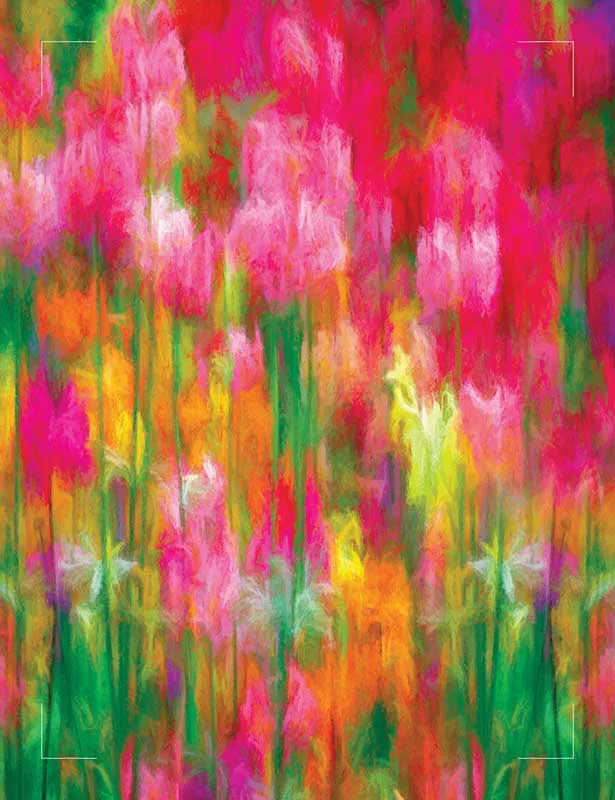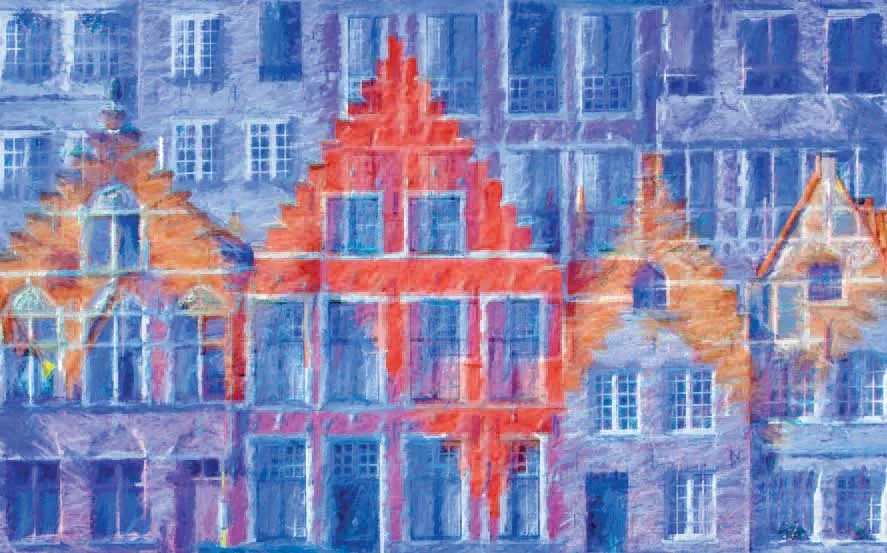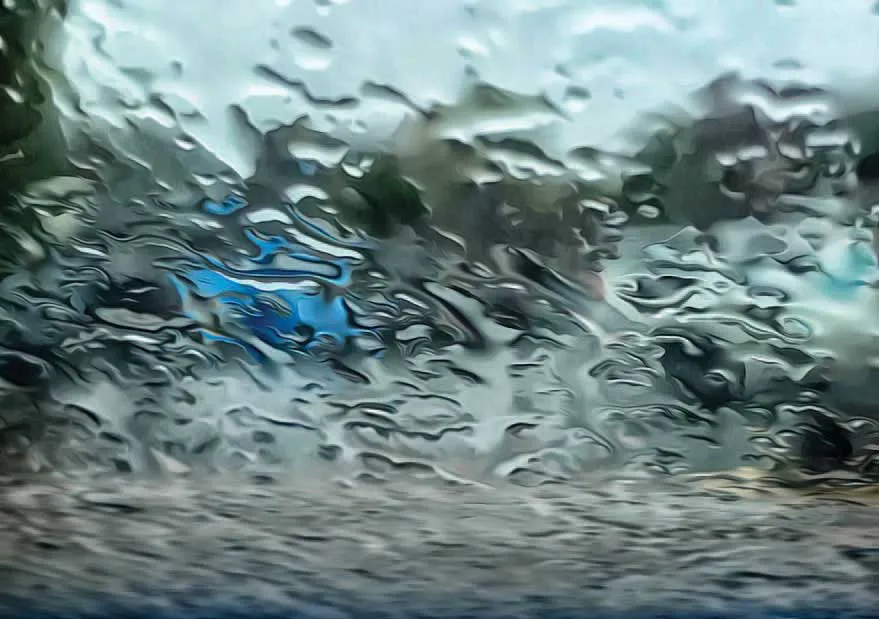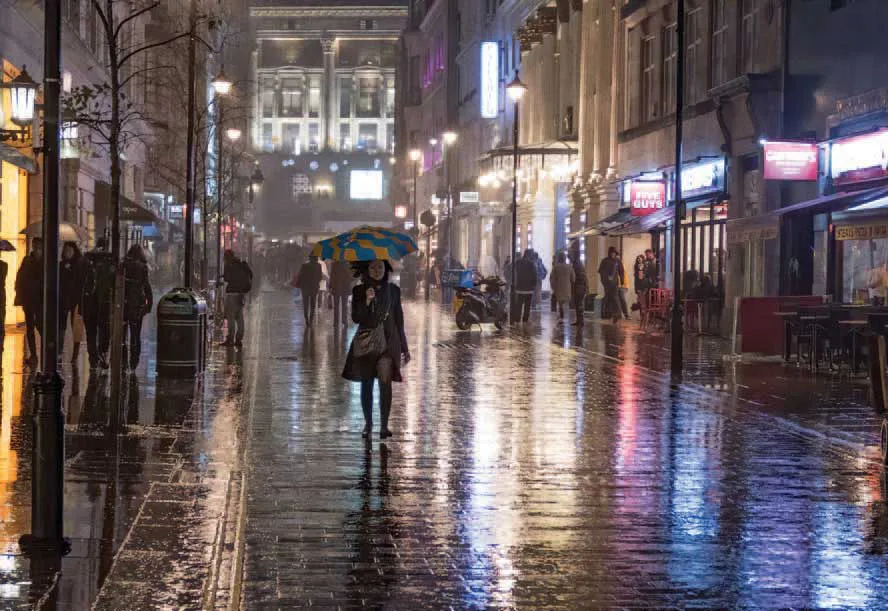![]()
Chapter 1
Developing Creative Vision
You have to let yourself go to be creative. Children possess this quality but then seem to lose it as they are told, ‘it’s not the done thing’.
RICKY GERVAIS
Creativity is hard to define. Some things cannot be pinned down by language. They relate to human emotion and experience. In photography, as in all pictorial art, creativity is striking and recognizable but is not necessarily open to analysis.
Fig. 1.1
Drama was added to this picture of primula by adding motion blur and texture in Photoshop and increasing colour saturation.
Creativity is the process of producing something new, but not just any new thing. Creative art delivers something that stretches horizons, excites and inspires, and triggers an emotional response. In this book the definition of creative photography is:
The production of images with photographic origins, which utilize the photographer’s imagination and skill to create results that are
Different, Distinctive and Personal
Different means that a creative photograph is not a copy of an existing photograph or of someone else’s artwork. It must be genuinely something new.
Fig. 1.2
This picture of rooftops in Bruges was converted to a more personal representation by superimposing a section of the roofs over a blue-toned image of the building windows.
It would of course be easy to produce something different that was devoid of any merit. So the second condition, Distinctive, must also apply. This requires a level of quality so that the picture delivers a strong emotional and artistic message.
Finally, the image should be a Personal statement by the photographer. It should communicate the author’s vision of the world and tell an individual story. The photographer knows they have succeeded in developing a personal style when someone looks at a picture and knows that it is one of theirs.
FOR A CHOSEN FEW?
When admiring the work of great photographers, artists and designers, it is easy to feel rather defeated and to think that those heights are beyond the aspiration of ordinary mortals. Fortunately, this is wrong! The many studies and papers on the subject demonstrate that creativity is within the grasp of everyone. However, it seems that creativity is not something to learn as though it was a new skill, but that it is something to retrieve from earlier years. The researcher Dr George Land gave the NASA creativity test to five-year-old children and found that they delivered an average creativity score of 98 per cent. By the age of ten this had dropped to 30 per cent, and by the age of fifteen to 12 per cent. By adulthood, the average score was 2 per cent. People had unlearned creativity.
During development, humans acquire language, systems and rules. These deliver coping skills, but at the expense of creativity. This chapter explores ways to shake off the habits of adulthood and find ways to see the world through different eyes, the eyes of young children.
THE NASA CREATIVITY TEST
| Age | Average Score |
| Five | 98% |
| Ten | 30% |
| Fifteen | 12% |
| Adult | 2% |
DR GEORGE LAND
LEAVE THE COMFORT ZONE
Children are reckless explorers, uninhibited and unaware of danger. With experience they become conscious of risk and find patterns of behaviour that work in a challenging world. These become ingrained and rooted in habits. Any deviation triggers the stress response, often called ‘fight or flight’ since change is instinctively perceived as dangerous. As a result, people tend not to experiment with new ways of doing things and can resist new experiences. This is generally completely unconscious. Even an active desire for novelty and excitement finds itself limited by social, parental and procedural limitations.
Fig. 1.3
A picture taken through a car windscreen on a rainy day produces an unusual abstract. The camera was focused on the windscreen surface so that the distant objects become unrecognizable and only contribute colour and shape. 50mm lens, ISO 500, 1/30sec, f4.
Reawakening creative vision requires looking out of the box and resisting the inner voices saying this is not the way to do things. At first this might be uncomfortable, even painful, but it will be worth it for the new avenues – the new photographs – that will emerge.
TRY SOMETHING NEW
A good starting point to reawakening personal creativity is to do something completely new. In photography this could be to find new subjects, use different equipment or try new processing techniques. Remember that the aim is to experience some discomfort in doing this, not to just nudge the boundaries a little. So here are some suggestions – it is best to pick one that looks unfamiliar and challenging:
Fig. 1.4
A picture of London at night during heavy rain showing colourful pavement reflections. It is difficult to hold a camera and an umbrella at the same time, but the results can be worthwhile. 50mm lens, ISO 1000, 1/60sec, f5.6.
•Take a photograph in pouring rain
•Photograph the contents of the cutlery drawer
•Take a self-portrait
•Take a picture through frosted glass
•Photograph a dead flower
•Find an entirely abstract composition
•Produce a picture that illustrates a favourite piece of music
Bear in mind that the aim at this stage is not so much to produce a great picture, as to open new circuits in the brain and to become receptive to more creative artistic directions.
Fig. 1.5
A surprising range of pictures can be produced from objects close to hand. In this case, three forks resting on a mirror and the image converted to black and white. 100mm lens, ISO 100, 1/15sec, f4.5.
Coming up with new ideas for photography will test imagination, but no more than that. To be creative they must be put into practice.
IT’S NOT PHOTOGRAPHY!
As we push in new directions it is common to encounter negativity, often expressed with the declaration ‘it’s not photography’. This might come from outside, perhaps a camera club diehard, or a voice inside the head trying to talk us back into familiar territory. Ignore this, it doesn’t matter. This is a classic demonstration of the comfort zone in action, using a semantic argument to stifle experiment. Let others worry about the definition of photography and focus on producing pictures.
OULIPO
In 1969 the French author George Perec wrote a book titled La Disparition. This was translated into English by Gilbert Adair under the title A Void in 1994. A Void reads as an engaging thriller but with an unusual distinctive style. The rea...
